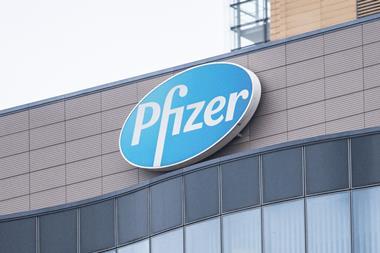Previous misdemeanours are compelling the pharmaceutical industry to be more open with financial information and clinical data, writes Nuala Moran

Past malpractice is catching up on pharmaceutical companies, with new regulations on the disclosure of payments to doctors and a requirement to provide access to clinical trials data about to come into effect on both sides of the Atlantic.
In the US, the rules relating to payments to doctors have the legal force of the Physician Payments Sunshine Act, but those on clinical data are part of a voluntary code. The situation is reversed in Europe, where the European Medicines Agency (EMA) is about to unilaterally enforce full transparency of clinical trials data, while the industry is in the throes of implementing a voluntary financial transparency code that it hopes will head-off a legal requirement to disclose details of payments or other support to healthcare professionals.
Both doctors and the industry agree that the relationship between pharma companies and the medical profession is essential to the translation of academic research into clinical studies of experimental drugs and – once approved – to ensuring products are correctly prescribed.
‘Cooperation between healthcare professionals, healthcare organisations and the pharmaceutical industry is important and necessary at all stages of the development and use of medicines, to secure safety of patients and efficacy of therapy,’ said Richard Bergström, director general of the industry body, the European Federation of Pharmaceutical Industries and Associations (EFPIA). But there is ample evidence from cases brought by the US Securities and Exchange Commission (SEC) that payments described as supporting such cooperation were in many instances overt bribes.
A fine business
Among the most egregious examples, in April 2011 Johnson & Johnson agreed to pay a fine of more than $70 million (£42 million) over charges that it bribed doctors in Greece, Poland and Romania to buy its drugs. Between 2000 and 2006, Johnson & Johnson’s Polish business spent $7.6 million on travel for doctors and government officials. In Romania, the company earned $3.5 million in profits from sales through bribery from 2000–2007, according to the SEC.

In December 2012, the SEC charged Eli Lilly with paying government officials to win business in Russia, Brazil, China and Poland. Without admitting or denying the allegation, Lilly paid a $29.4 million fine. In the same year, Pfizer paid $45 million to settle charges of illegal payments in eight European and Asian countries, which the SEC said were made to obtain regulatory approvals, sales and increased prescriptions of its products.
If these fines under the Foreign Corrupt Practices Act look bad enough, pharma companies have paid even bigger penalties for promoting drugs for uses for which the products were not approved by the US regulator, the Food and Drug Administration (FDA).
Most recently, in February 2014, Endo Pharmaceuticals agreed to pay $192.7 million to compensate for the mis-promotion of the local anaesthetic Lidoderm (topical lidocaine). The product is approved only for pain caused by shingles, but was marketed as being suitable for other kinds of pain. Among a number of other fines on companies for mis-promotion, the largest such penalty was the $3 billion paid byGlaxoSmithKline (GSK) in July 2012, for selling the depression treatments Paxil (paroxetine) and Wellbutrin (bupropion), and the Type II diabetes treatment Avandia (rosiglitazone), for uses for which they did not have FDA approval.
Despite various corporate apologies and internal reforms, GSK continues to be mired in charges of wrongdoing, notably in China, where it is accused of paying bribes to doctors. In May, the UK Serious Fraud Office opened a formal investigation into the company’s commercial practices, while GSK is itself currently investigating allegations of malpractice in its operations in Jordan, Lebanon and Poland.
GSK claims to be the first to eliminate the possibility of any undue influence by ending payments to doctors to talk about its products or to attend medical conferences, and by axing commission-related payments for its sales representatives. But there is a risk that an over-reaction to these cases will undermine cooperation between the pharma industry and the healthcare profession.
To take a single example, one of Europe’s leading patient advocates, Alastair Kent, director of Genetic Alliance UK, felt obliged to step down from the EMA’s Committee for Advanced Therapies (CAT) in 2012, when the EMA brought in a conflict of interest rule restricting CAT’s relationship with the pharmaceutical industry.
‘I resigned because they were creating a system where it was increasingly difficult to talk to the people who are the experts in advanced therapies,’ Kent says. ‘If, as the committee assessing these sorts of therapies, you can’t talk to the companies developing them, you don’t know what you are talking about.’ In addition, Kent notes that the EMA brought in the new rules to address a perceived conflict of interest when it had no evidence of any such conflict occurring.
The medical profession also stresses the importance of the interchange with the industry in the development and appropriate use of drugs. According to Donald Singer, secretary of the European Association for Clinical Pharmacology and Therapeutics, the support for training clinicians in prescribing newly-approved medicines suffers from ‘a problematic vacuum from government’.
Similarly, Singer believes pharma companies need access to the expertise of clinicians and pharmacologists in the development phase. ‘Without these insights, the industry cannot fully understand the medical needs of patients,’ he says.
Obeying the code
As part of their settlements with the SEC, pharmas accused of bribery were required to post details of their payments to doctors on company websites. From September, this is extended to a legal requirement in the Physician Payments Sunshine Act, under which all payments will be listed on a single, searchable, public database.
However, setting up the Open Payments database has been plagued with problems, in particular with doctors finding the information pharmaceutical companies have submitted about them was incorrect, leading to calls from the American Medical Association for the public launch to be delayed until March 2015. ‘Patients need accurate information. If the government releases incorrect information to the public, it can lead to misinterpretations, harm reputations and cause patients to question their trust in their physicians,’ said AMA president Robert Wah, calling for the postponement at the end of August.
Recognising that regulatory scrutiny and public opinion was catching up with the sector as a whole, the EFPIA moved to silence calls for a Sunshine Act in Europe by introducing a voluntary code on ‘disclosure of transfers of value’.
Patients need accurate information
Robert Wah
The code, which comes into effect in January 2015, requires the EFPIA’s 33 national member organisations to collect details of itemised payments to named individuals from pharmaceutical companies and publish it in central open registries. First publication is due in 2016. Under pressure from the country’s health ministry, one EFPIA national body, Nefarma in the Netherlands, has already set up a central database and published the first register in April 2013, in which payments totalling €32 million (£25 million) were itemised.
In the UK, the Association of the British Pharmaceutical Industry (ABPI) started publishing aggregate payments made by companies in 2012, when a total of £40 million was paid as fees for services, consultancy and sponsorship. The figures for 2013, published in April 2014, disclosed total payments of £38.5 million. Such disclosure will ‘help address concerns about the relationship between healthcare professionals and industry while ensuring collaborative working that benefits patients can continue’, said Stephen Whitehead, ABPI chief executive.
In Europe, the industry’s moves to institute a voluntary code seem likely to head off legislation to enforce the disclosure of payments to healthcare professionals. The same is not true for clinical data, where transparency will have legal force. This is despite the EFPIA and its US counterpart PhRMA (Pharmaceutical Research and Manufacturers of America) getting in ahead of the EMA in setting up an industry-controlled access system. The industry’s principles for clinical trial data sharing came into effect on 1 January 2014, covering drugs approved by EMA and FDA after that date.
The principles do not amount to an open door, however. Rather, individual companies are setting up scientific boards, including independent experts, to review requests for access to data, which will be granted only to bona fide researchers. The EFPIA says the aim is to strike a balance between satisfying legitimate requests for data and the need to protect patient confidentiality and intellectual property. ‘A framework run by industry is more likely to reflect this balance,’ Bergström claims. The EMA says it needs to be in control of data disclosure but Bergström disagrees. ‘We as the industry think we should do it ourselves.’
Self-regulation will provide an in-built quality control mechanism. While there will be a dramatic increase in the availability of data, the review boards will examine each research proposal and ‘make sure it’s not bad science,’ according to Bergström.
Public pressure
The industry proposal left campaigners such as the AllTrials group co-founded by Ben Goldacre – whose book Bad Pharma chronicles how gaps in the availability of data impedes good medical practice – dissatisfied on three counts. AllTrials wants access to historical data relating to all drugs currently on the market, full disclosure of any negative trials, and does not want pharmaceutical companies to be in control of access.
Underlining the extent to which the industry’s principles fall short of campaigners’ demands, a UK Science and Technology Parliamentary Select Committee report published on 3 January 2014 claimed important information about clinical trials is routinely withheld by manufacturers and concluded: ‘None of the latest proposals from regulators or industry adequately addresses the issues of access to the results of trials from previous years on medicines in use today.’
Caught between two irreconcilable views, the EMA has so far failed to deliver on a draft policy published in July 2013, in which it promised open access to clinical study reports once products were approved. The policy was originally due to come into effect at the start of this year, but after a four month consultation process in 2013, the EMA said last December that it needed extra time to draw up the rules and was delaying adoption of the policy until March 2014.
This deadline came and went. Industry opposition to clinical trial data being made freely available in centralised, public, searchable databases gave the EMA pause for thought, prompting it to suggest study reports be available in a ‘view on screen’ mode only and that reports might be censored to protect information that companies said was commercially confidential.
However, this climb-down got the EMA into hot water with the European Ombudsman, the European Union’s public interest watchdog, whose earlier rulings were the initial spur for the EMA’s transparency policy. The Ombudsman, Emily O’Reilly, wrote to the EMA in May, questioning the change of direction and telling the agency it could not set conditions around the use of information once it is accessed.
At its meeting on 12 June, the EMA management board responded to O’Reilly’s criticism by reversing the proposal to restrict access to on-screen only viewing. At this point, the US Chamber of Commerce weighed in, saying the proposed policy called into question the EMA’s attitudes to the ‘inherent confidentiality’ of data submitted in marketing applications and its role as a custodian of the information. Drugs regulators elsewhere are facing calls for increased transparency but none plans to go as far as the EMA, the Chamber of Commerce noted. Rather, other agencies are showing they are ‘cognisant of the need to balance greater clinical trial transparency with the need to protect proprietary and confidential information’, the US Chamber’s report said.
Openness vs confidentiality
The EMA’s proposed transparency policy may result in commercially confidential information being made public outside Europe, and it could be used by third parties as the basis of marketing applications in other jurisdictions, the report claimed. Following this intervention the EMA blinked again, and on 9 July announced it was once more deferring formal agreement on the clinical trials data transparency policy. The subject now comes up for discussion at the next management board meeting on 2 October.

Defending the further delay, the agency cited difficulties in striking a balance between proactive data disclosure, the absolute need to protect personal data and concerns about commercially confidential information, saying it ‘remains committed to introducing this additional measure towards transparency as soon as possible’.
If the EMA prevaricates much longer, it will be overtaken by the EU’s new directive on clinical trials, which was signed into law in May. This creates a specific legal requirement to publish clinical trials data once a product is approved, beefing up the current requirement, which is based on freedom of information laws.
However, the directive is not due to be implemented until 2016, leaving transparency campaigners and the industry to await news of the 2 October EMA management board meeting. After the very public vacillating between their opposing demands, another postponement would seriously undermine the credibility of EMA director general Guido Rasi, who made transparency one of his major themes on coming into office at the end of 2011.
For now, the last word goes to the AllTrials campaign, which on 19 August wrote to all members of the EMA management board, saying ‘There is no good reason to introduce barriers to clinical study report access.’ Allowing independent researchers to be free to scrutinize trial data will have huge benefits for patients, doctors, pharmacists, regulators and researchers. This will inform treatment decisions now, and decisions about future research, the letter says.
Nuala Moran is a science writer based in Audlem, UK












No comments yet